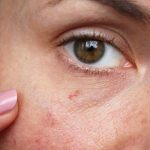What is sclerotherapy?
Sclerotherapy is a form of treatment where a doctor injects medicine into blood vessels or lymph vessels that causes them to shrink. It is commonly used to treat varicose veins or so-called spider veins.The procedure is non-surgical, requiring only an injection. It can also be used to treat blood and lymph vessel disorders that cause these vessels to form incorrectly.Sclerotherapy uses an irritating solution called a sclerosant, which is injected directly into a vein or lymph vessel. The solution irritates the vessel, causing it to swell. This swelling cuts off the flow of blood or lymphatic fluid and the vessel shrinks.Various forms of sclerotherapy have been around since the 19th century, but techniques have improved in recent decades.
What conditions does sclerotherapy treat?
Sclerotherapy is most often used to treat varicose veins. Varicose veins are also known as chronic venous insufficiency.Varicose veins occur when the veins swell and bulge, usually in the legs. This is due to weak vein walls that, in turn, weaken the vein valves. As a result, blood pools up the veins, causing them to swell and look different.Varicose veins may be painful and can cause skin issues, including rashes. By shrinking the veins, sclerotherapy reduces the effects of vein damage, making varicose veins less visible and less painful.Sclerotherapy is also used to treat some other conditions, including:
Malformed lymph vessels. These are vessels that carry lymphatic fluid or lymph, which helps the immune system fight infections.
Hemorrhoids. Sclerotherapy may be used when other treatments fail. Hemorrhoids occur when blood vessels, surrounding the rectum, swell and become irritated, causing pain and making bowel movements uncomfortable.
Hydroceles. A hydrocele is an unhealthy development of fluid in a body cavity. Hydroceles are common in the testicles.
When to consider sclerotherapy?
Not everyone who has spider veins or another condition that can be treated with sclerotherapy needs to have the procedure. People should discuss their symptoms and treatment options with their doctor to decide if it is necessary.
People with spider veins should consider sclerotherapy when:
- the veins are painful
- the legs are sore or feel heavy
- the skin on the legs or feet is patchy or dry
- there is a rash near the veins
What to expect from sclerotherapy?
Sclerotherapy may be performed in the office of a dermatologist.
Sclerotherapy requires a consultation with a doctor to assess the problematic vein or lymph vessel. Sclerotherapy for spider veins is usually performed in the office of a dermatologist or a vein specialist.
The procedure does not usually require anesthesia or any special preparation. People should follow the doctor’s instructions before surgery since it might be necessary to avoid lotions or oils beforehand.
During the treatment, the person lies on their back with their legs up. A doctor cleans the area, then inserts a small needle into the vein. The needle may pinch.
The doctor injects the vein with an irritating solution. The individual may feel burning, tingling, or nothing at all.When the injection is complete, the doctor will massage the area to prevent blood from re-entering the vein. The individual may need to wear a pad or compression stockings in the area.In most cases, someone will need follow-up treatment to collapse a vein fully. If there are several varicose veins, numerous treatments may be the only way to get rid of them. After the treatment, people should remain active to prevent blood clots from forming. Most will also need to avoid sunlight, which can cause dark spots on the treated area.
Some people experience tenderness or bruising at the site of the injection, but recovery is otherwise relatively easy.
What are the risks of sclerotherapy?
Sclerotherapy is a safe procedure. It is a less invasive and risky option than surgery, as it does not require anesthesia.Research suggests that it effectively removes spider veins in 75–90 percent of cases, but typically requires multiple treatments. When sclerotherapy does not work, additional treatments, including surgery, may be needed.The most common negative reactions to sclerotherapy include bruising, redness, and pain near the injected vein. About a third of people develop small branches of blood vessels surrounding the injected vein. These vessels usually disappear on their own.Less frequently, an individual may experience allergic reactions to the solution, burning in the vein, and changes to skin color.
Tiny air bubbles from the needle can also get into the bloodstream, causing changes in vision, headache, and nausea.Very rarely, a blood clot can form in the treated vein. Blood clots can travel to areas of the body and become life-threatening if left untreated. If a blood clot moves, it can cause an embolism.
People should seek emergency treatment if they experience chest pain, difficulty breathing, or dizziness after having sclerotherapy.
Alternatives to sclerotherapy :
Other treatments for malformed veins include laser therapy.
Not all malformed veins require treatment. When there are no other symptoms, it is safe to monitor the veins to see if they get worse or begin causing other symptoms.
Lifestyle changes can prevent the veins from getting worse and prevent the development of new varicose veins. Other treatment strategies may include:
- cryotherapy or freezing the veins
- laser therapy, using light to fade the veins
- vein ablation, using heat on a malformed vein
- closing the vein with surgery
- surgically removing the veins in severe cases
- Takeaway
- Sclerotherapy is usually a minor, noninvasive procedure to fix troublesome veins. The outlook for people after sclerotherapy is good since serious side effects are rare and it is effective.
People who are concerned about the risks and benefits of sclerotherapy should discuss the procedure with a doctor and consider seeking a second opinion. It is also wise to contact an insurer to learn whether the procedure is covered.
